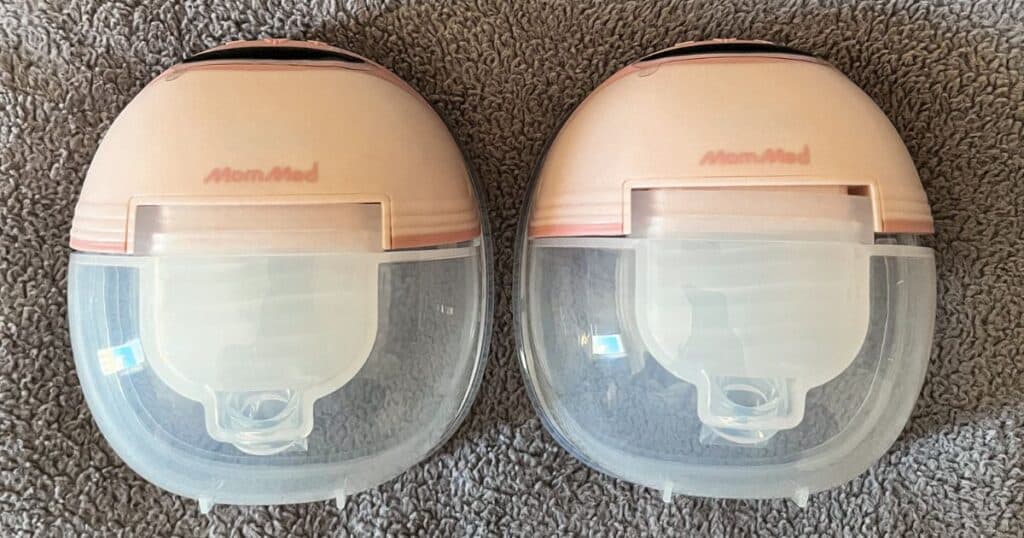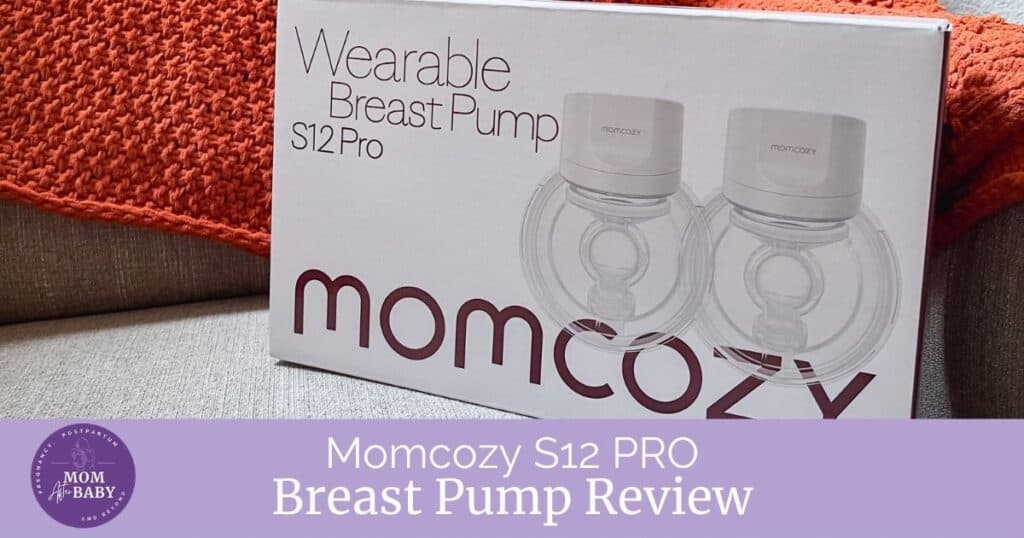How to Use Breast Milk Storage Bags to Properly Store Your Milk
This post may contain affiliate links that I may receive a commission from if you click & buy. In addition, the information on this site is NOT intended to be medical advice. See my full policy for more information.
If you’re planning to breastfeed your baby, you might find yourself at some point needing to store some breast milk for later. No matter if you’re an exclusively pumping mother or a nursing mother who periodically pumps milk for storage — this article will help you learn how to use breast milk storage bags properly so you never waste an ounce.

What is a Breast Milk Storage Bag?
I like to think of breast milk storage bags as the “Ziploc” for breast milk. They’re pre-sterilized bags that come safe and ready to use for breast milk storage. Many bags come in a variety of shapes, sizes, and yes, even colors.
As you breastfeed longer, you’ll come to find there are some storage bags you love and others you absolutely would never use again. For instance, I always disliked bags that had a small space to write the date and time. I prefer bags with a larger space so that I can easily see which milk I need to grab from the freezer next.
As you get to use them, you’ll find which ones you absolutely love. To help, you can learn about all the different types of breast milk storage bags below.
Disposable Breast Milk Storage Bags
Disposable bags come pre-sterilized and are typically made from a thin plastic material (almost like a Ziploc bag). They almost always have a double zipper seal to prevent any leakage or spills.
Disposable Breast Milk Bags also:
- Are BPA Free
- Have space at the top or side of the bag to write the date/name/time
- Are easy to store
- Come single use
- Sometimes have a cutout spout to help minimize spills when transferring from bag to bottle.
The Most Recommended Disposable Breast Milk Storage Bags are:

Reusable Breast Milk Storage Bags
Reusable breast milk storage bags are an environmentally friendly alternative to disposable storage bags. They’re made of food-grade silicone and are actually pretty durable (including leak-proof thick material).
Upfront, they do tend to cost a bit more, but you definitely will get your money’s worth when you are able to reuse them for a while. Each brand will have different specifications as to how long their intended use is, so be sure to double-check your bag’s instructions.
The BIGGEST con of reusable breast milk bags is that they tend to be bulkier making it harder to store in small spaces.
Best Reusable Breast Milk Storage Bags

Multi-Use Breast Milk Storage Bags
Multi-use breast milk bags are great if you have multiple young children. That’s because most often these milk storage bags can be used to store milk AND to store homemade squeezable fruit for your baby or toddler.
A perfect example of this is the Kiinde Twist Storage Bags. The bags can be used as disposable milk storage bags or as puree food pouches.
Another bonus to the Kiinde Twist Storage Bags is that you can get an attachment (also found in their starter kit) that allows you to directly pump into them without having to worry about any spills or leaks!
Reusable silicone breast milk bags are another multi-use bag that can be used to store breast milk or other pureed type foods for babies.

Breast Milk Storage Milk Trays
Breast milk storage trays are another popular option for mothers looking to store their milk in the freezer for later.
When I polled some of the breastfeeding mothers on social media, many voted they loved using milk trays because “it was easy to store the milk and easy to measure when time to thaw“.
Most milk trays have a row of bricks or “milk sticks” that each hold 1-2 ounces (as specified on the packaging). Because these sticks are thin, they’re incredibly easy to pop out of the tray and place directly into a bottle when it’s time to thaw out. This helps eliminate waste because you can thaw the exact amount you need (example: 3 ounces = 3 x 1-ounce sticks).
These milk trays are made out of food-grade plastic and are BPA-free plastic.

How to Use Breast Milk Storage Bags Properly
Now that you know which breast milk bag might be best for you, it’s time to go over how to use breast milk storage bags properly. From filling to thawing, you’ll learn exactly how to handle your breast milk so that it’s always safe for your baby’s consumption.
1) Write the Date and Time on Your Milk Bag
The first thing I like to do is write the date and time on my milk bag. I always do this step first because when you’re up in the middle of the night transferring milk, you’re more likely to forget. Plus, your breast milk actually contains more melatonin (the sleepy hormone) at night compared to the day.
This is another good reason to put the times on your milk bag. If you can, use your nighttime milk during night feeds or before bedtime to aid in sleep promotion while saving the daytime milk for the day.
2) Transfer the Milk Into The Bag
Now that you labeled your breast milk bag, it’s time to transfer the milk from bottle to bag!
If you’re lucky enough to pump directly into a bag, you get to skip this step, but if not, keep on reading.
When it comes time to transfer your milk from bottle to bag, you’ll want to first decide how many ounces you plan to store in each bag?
More milk in the bag isn’t always better. In fact, storing less milk (1-2 ounces of milk per bag) will help to eliminate wasting milk. Think of it this way, you can always thaw more milk, but you can’t restore already thawed milk.
Once you know how much you will store in each bag, you can pour your milk into the bag, seal it up and place it into your freezer or refrigerator.
3) Store Milk According to Proper Guidelines
Always make sure you’re handling your breast milk with clean hands. After all, storing breast milk can get a little tricky. Here are the proper guidelines to follow when it comes to proper and safe breast milk storage:
- Freshly expressed/pumped breast milk can be stored in the FREEZER for up to 12 months (but using within 6 months is best) and in the REFRIGERATOR for up to 4 days.
- Thawed/previously frozen breast milk can be stored in the REFRIGERATOR for up to 24 hours. You should never refreeze previously thaweed breast milk.
Updated news from the American Academy of Pediatrics also states that “Mothers can (now) mix warm milk and cold, or even consider pooling milk from 24 hours together, which may help even out variability in nutrients due to pumping time or breast emptying (which influences fat content of the milk).”
4) Rotate Your Bags (if needed)
Remember when you dated your bags? This is another helpful reason for that! If you’re a mom who is planning on building a huge storage stash, you won’t have to worry about this as frequently. If you’re a mom who is frequently putting new bags of milk into the refrigerator for the following day, you’ll want to make sure you’re grabbing from the oldest milk first.
You’ll also want to be mindful of the times the breast milk was pumped and when it’ll be given.
How to Transfer Breast Milk from Storage Bags Into a Bottle?
So, you stored your breast milk, you followed the guidelines, and now you need to thaw some milk for baby — what do you do now?
1) Thawing Your Breast milk (how do you heat breast milk in storage bags?)
Thawing breast milk may feel scary (because who wants to risk wasting any of that liquid gold?), but it isn’t difficult. Always remember to thaw small portions first, because once it’s thawed, there’s no going back.
- Thawing in the refrigerator — Breast milk can be thawed out in the refrigerator over a 12 hour period. Simply grab the bag(s) you need from the freeze and place them into the refrigerator.
- Thawing in a bowl of warm water — Another simple way to thaw your breast milk from the freezer is to set the bag in a bowl of warm water no hotter than 99 °F.
- Thawing in a bottle warmer — Some bottle warmers have an option to thaw breast milk. Keep in mind some bags cannot withstand the heat and may leak (which should never exceed 99 °F when thawing).
Also, keep in mind that milk thawed from the freezer should never be refrozen. Any milk your baby does not consume during their feed should be used within 2 hours if stored at room temperature or 24 hours when refrigerated.
2) Transfer from Bag to Bottle
Most breast milk spills come from transferring milk from bottle to bag or from bag to bottle — it’s a common problem that can be solved. In this step, I’m going to share a few milk transferring hacks to help minimize any spills.
- Funnel Transfer — If you have a pumping breastshield flange (like these ones compatible with medela) you can use them as a funnel. This will help to ensure no milk splashes or spills out of the bottle top when pouring.
- Use bags with a convenient pour spout — Breast milk bags such as the Lansinoh bags have a cutout on each side of their bag to act as a pouring spout. This gives your milk a clear direction to pour to help minimize spills making it a great way to transfer milk. Using a screw top bag like the Kiinde breast milk bags is also helpful as it’s more secure when it comes to pouring.
As you can see, knowing how to efficiently use breast milk storage bags can help minimize waste and spills. From pumping fresh milk into a storage bag to knowing how to transfer milk to a bottle — these tips should make how to use breast milk storage bags easier.
Read more breastfeeding articles here:
20 Breastfeeding Hacks and Secrets Every New Mom Should Know
The Ultimate MomMed S21 Wearable Breast Pump Review
S10 Pro Hands-Free MomMed Breast Pump REVIEW
10 Tips for Successful Breastfeeding for New & Expecting Mothers
Momcozy Breast Pump Review for the S12 Pro (All You Need to Know!)
Body Armor Drink and Breastfeeding
10 Valuable Tips for Successful Breastfeeding











